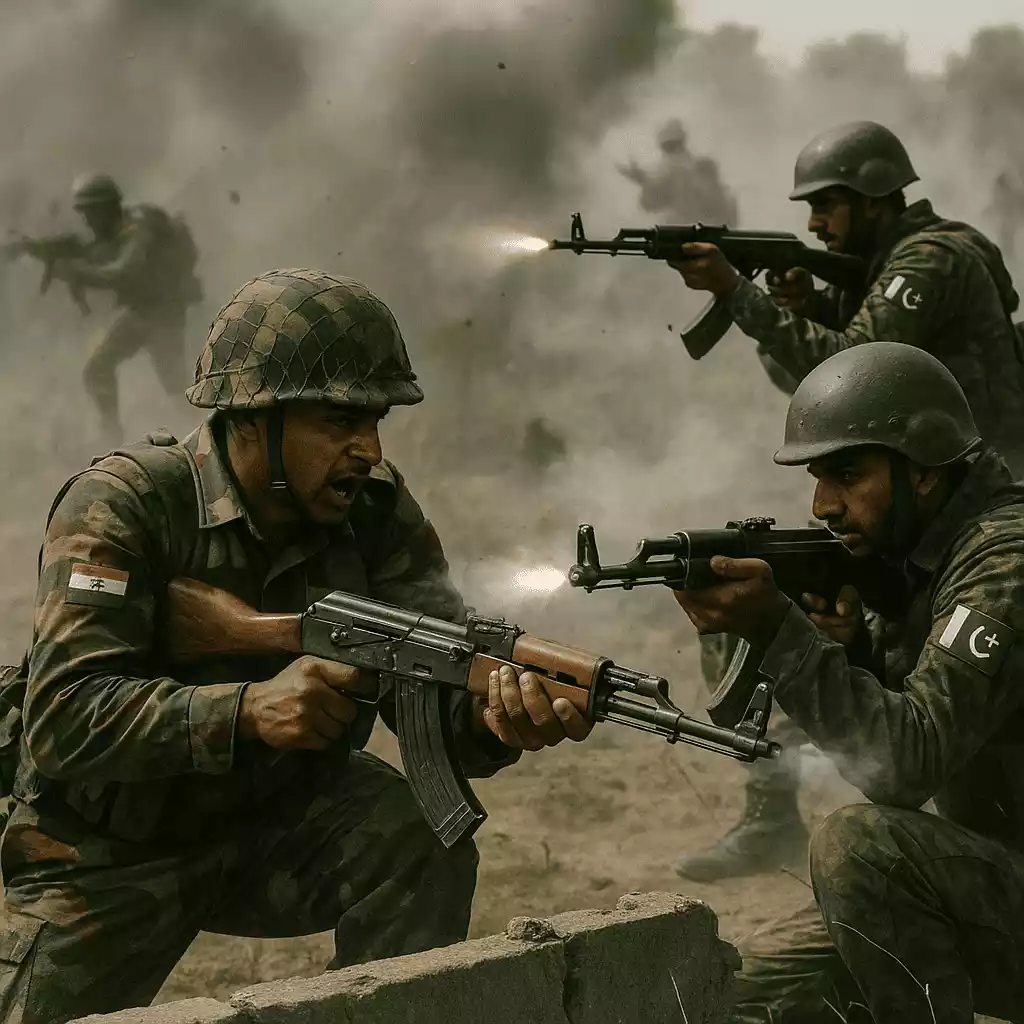Breaking News: India Pakistan Clash Intensifies in Operation Sindoor

Introduction
Tensions are once again flaring between India and Pakistan as Operation Sindoor takes center stage in what experts are calling the most intense military face-off in years. This operation signifies a perilous escalation in one of the globe’s most unstable areas, following significant events along the Line of Control (LoC). Let’s break down the story in a way that’s easy to understand—whether you’re a student, a news buff, or someone just trying to keep up.
The Historical Context (India, Pakistan)
India and Pakistan have had a rocky relationship ever since their partition in 1947. From the wars of 1947, 1965, 1971, to the 1999 Kargil War, their shared border has often seen more conflict than peace.
Despite multiple ceasefire agreements, peace remains fragile, especially in the contested region of Kashmir, which both countries claim entirely but control in parts.
What is Operation Sindoor?
Operation Sindoor, named after the traditional red pigment that represents sacrifice in Indian culture, was allegedly initiated as a strategic response by Indian forces in light of heightened infiltration activities and cross-border firing.
Its objective? To push back militant threats and establish dominance along critical stretches of the LoC. The operation has quickly escalated, drawing significant attention both domestically and internationally.
Why Now?
You might wonder—why is this happening now?
Several triggers are being discussed:
Recent assaults in Jammu & Kashmir aimed at Indian military personnel
- Political shifts in Pakistan and rising instability
- India’s increased border surveillance and new rules for engagement
These factors have set off a chain reaction, pushing both sides to flex military muscle.
Timeline of Events – India, Pakistan
- Day 1: Intelligence suggests militant movements near the LoC.
- Day 2: On the second day, the Indian Army initiates preemptive strikes as part of Operation Sindoor.
- Day 3–7: Retaliatory shelling from Pakistan’s side; skirmishes escalate.
- Day 8: Fighter jets and artillery units are deployed by both countries.
- Day 10: International media picks up the story; global calls for peace begin.
Key Locations Affected
Operation Sindoor has affected multiple regions, especially:
- Kupwara and Poonch (India-administered Kashmir)
- Muzzaffarabad (Pakistan-administered Kashmir)
- Civilians in border villages have been forced to flee, creating temporary shelters and camps.
Military Strengths Compared
India
- Advanced weapon systems like the Rafale jets
- Use of satellite surveillance
- The Northern Command of the Indian Army plays a significant and impactful role in the region, demonstrating its importance through various strategic operations and initiatives.
Pakistan
- Counter-deployments with JF-17 Thunder jets
- Ground troops in fortified bunkers
- Rapid reaction forces are prepared for retaliatory strikes
Use of Technology in Warfare
This isn’t a 1971-style ground battle. Today’s conflict includes:
- Drone surveillance to map enemy positions
- Cyber warfare activities targeting communication networks
- Real-time intelligence from satellites and AI-powered systems
Civilian Impact
Thousands of civilians have been impacted:
- Schools near the border have been shut down
- Entire villages have been evacuated
- Electricity and water services have been interrupted in multiple zones
Humanitarian Efforts
NGOs and government agencies are stepping in:
- Red Cross and local charities are distributing food and medicine
- Emergency helplines and refugee shelters are operating in Jammu and Punjab
- Medical teams are on standby, treating the injured
International Reactions
Global leaders have started voicing concerns:
- The United Nations urged both sides to return to diplomatic talks
- The United States expressed hope for peaceful dialogue
- China and Russia called for restraint, offering to mediate if needed
Even world-famous news outlets like BBC, CNN, and Al Jazeera are providing 24/7 coverage.
🔗 Read more on BBC’s Conflict Report
🔗 UN Official Press Release on the Crisis Here
Social Media and Public Sentiment
Hashtags like #OperationSindoor, #IndiaPakistanClash, and #PrayForPeace are trending across X (formerly Twitter), Instagram, and YouTube.
Citizens from both nations are:
- Expressing solidarity with soldiers
- Demanding peace from their governments
- Sharing real-time videos of bombings and troop movements
🎥 Watch this YouTube explainer on the current situation:
What This Means for South Asia
This conflict isn’t just about India and Pakistan—it puts the whole region at risk. Trade routes, international partnerships, and even student exchanges between countries could be frozen. The stability of South Asia is under threat.
Future Scenarios
What could happen next?
- Best case: Peace talks are initiated with third-party mediation
- Worst case: A larger war breaks out, dragging in global powers
Many hope that diplomacy will prevail, but as long as border tensions continue, the risk remains high.
Conclusion
Operation Sindoor is a stark reminder of how quickly tensions between India and Pakistan can spiral. With lives at risk, infrastructure damaged, and diplomatic ties fraying, both nations need to pause, reflect, and pursue peace.
While patriotism fuels pride, wisdom must guide the path forward.
FAQs
- What is Operation Sindoor?
It’s a recent Indian military operation aimed at controlling cross-border infiltration and militant threats along the LoC with Pakistan. - What triggered the latest clash?
The conflict was triggered by recent militant attacks in Kashmir and rising political instability in Pakistan. - Which areas are affected?
Kupwara, Poonch, and parts of Pakistan-administered Kashmir have seen the heaviest action. - How are civilians being helped?
Relief efforts include temporary shelters, food distribution, and medical assistance coordinated by local governments and NGOs. - Will this lead to another war?
While tensions are high, there’s still hope that international pressure and dialogue will prevent full-scale war.



pnvnnl
Этот текст на украинском языке.
Цікавий текст, але якось занадто короткий. Чи можна отримати більше інформації з цього джерела? Як ви вважаєте, чи варто розширювати цю тему? Можливо, є ще якісь деталі, які варто врахувати? Якби текст був довший, чи було б це корисно для читачів? Чи плануєте ви розвивати цю ідею далі?
Ми інтегрували libersave у нашу регіональну систему купонів. Це чудово, як просто можна об’єднати різних постачальників на одній платформі. Whith regards, GERMA